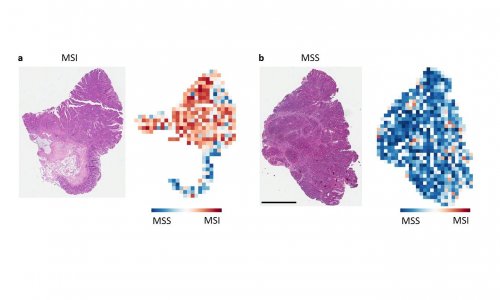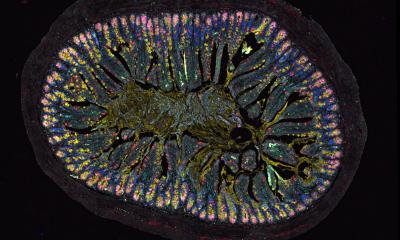
Image source: Scientific Animations Inc. (CC BY-SA 4.0)
News • Sprue POCT
Celiac disease: faster detection through new method
Researchers from the University of Helsinki developed a novel diagnostic method for the rapid on-site measurement of antibodies from patient samples. Now they have applied this new method for the diagnostics of celiac disease, with promising results.
Point-of-care (POC) testing is a rapidly growing sector, bringing medical testing from central laboratories to where the patient is receiving care. The new method named RFS (Rapid FRET serodiagnostics) could revolutionize the serodiagnosis of microbial, autoimmune and allergic disorders.
The researchers published their findings in the journal PLOS One.
Celiac disease is an autoimmune disorder typically presenting as non-specific gastrointestinal symptoms. It affects approximately 1% of world population, with more than 90% of patients undiagnosed. Even in affluent countries, more than half of celiacs are unaware of their disease. Delayed diagnosis is associated with impaired quality of life and persistent symptoms even after treatment.
Screening of celiac disease is recommended for patients with e.g. gastrointestinal symptoms or other autoimmune diseases as well as for the first-degree relatives of celiac patients. The screening test involves measurement of disease-specific antibodies from a blood sample.
We hope our rapid method could lower the threshold for screening of celiac disease and thus help overcome the vast underdiagnosis of this relatively common condition
Juuso Rusanen
The researchers gathered samples from 70 celiacs at the Kuopio University Hospital, half from children and half from adults. Control samples from healthy donors were also collected. The samples were measured using the new assay and results compared with two currently used methods. “The performance of the test was comparable to that of current methods. The prevailing method involves transporting the sample to a central laboratory and a multi-step procedure taking hours. With the new method, results can be achieved in less than half an hour by simply combining the sample and a reagent mix, waiting for a while and reading the result.”, Juuso Rusanen, MD, explains. He continues: “We hope our rapid method could lower the threshold for screening of celiac disease and thus help overcome the vast underdiagnosis of this relatively common condition.”
“Additionally, this is the first time the new method has been used for diagnostics of autoimmune disease. This is a promising result, and prompts the development of similar tests for diagnostics of other autoimmune disorders”, Rusanen points out.
Source: University of Helsinki
27.11.2019











